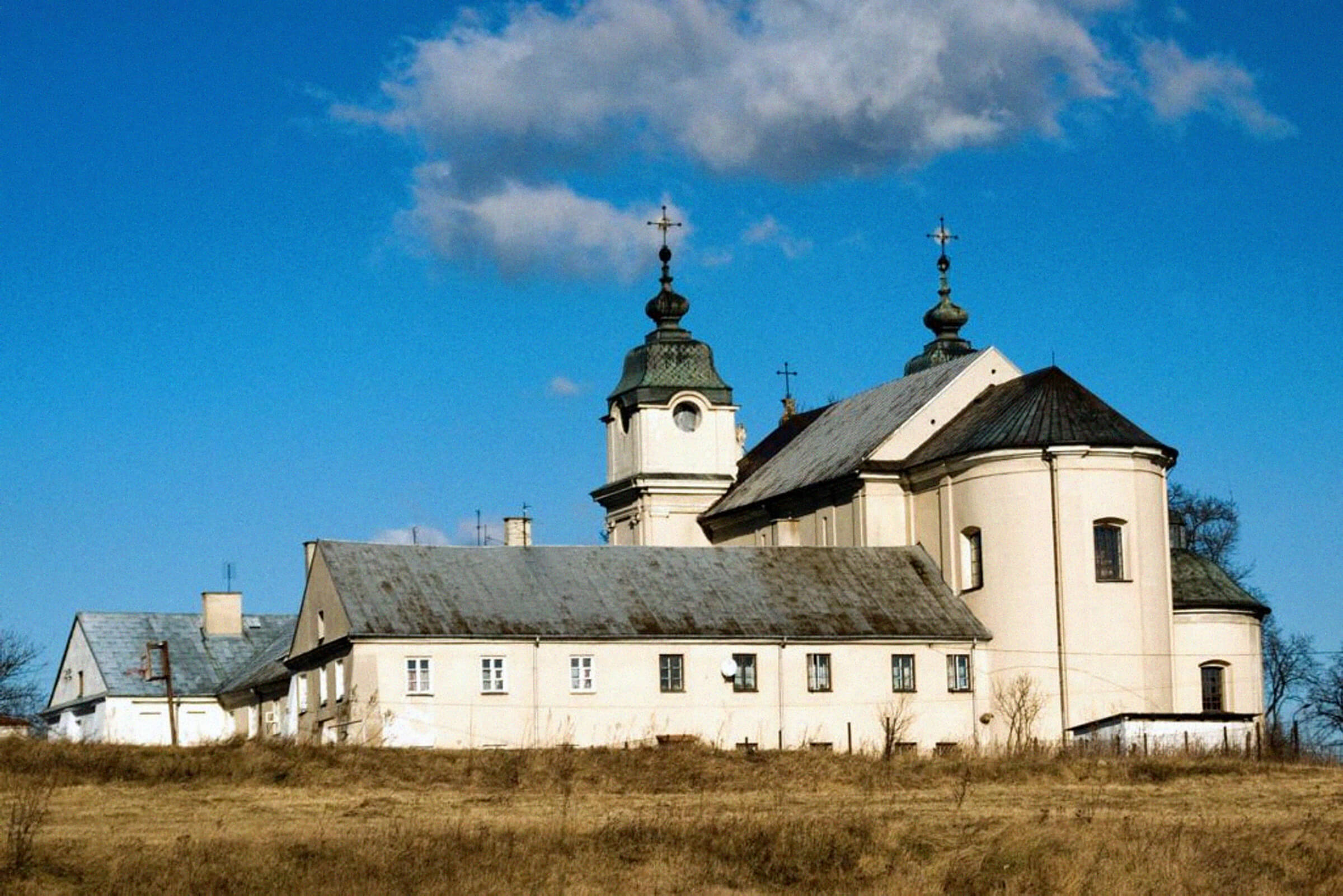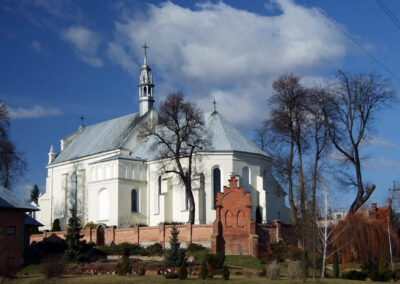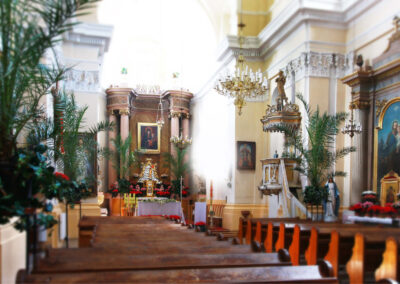
You are here: Home > Invaluable venues > The Church of Our Lady of the Scapular
x
The Church of Our Lady of the Scapular
The Church of Our Lady of the Scapular (the post-Franciscan church) is often referred to as the small church. In the 1720s, widow Katarzyna of Boglewice brought the Franciscan Order to Warka. They received a plot of land, lodgings, a donation of 8,000 Polish zlotys, and the little church of St. Leonard. In the years 1632-1634, the Franciscans built their own wooden church and monastery.
In 1652, they started construction in brick, but completion was made impossible by the Swedish invasion called the Deluge. The monastery was saved from a fire, but in 1656, Swedes, who were plundering the town, murdered several Franciscans. In 1692, the monastery’s guardian Fr. Franciszek Słomka managed to have a portion of the brick monastery built.
The rest was finished by the mid-18th century. Fr. Paulin Sękowski enlisted financial help from Ciechanów Castellan Władysław Grzegorzewski and a Baroque façade with two towers was built. The main altar was decorated with the image of the Virgin Mary and Child, on wood, most probably from the turn of the 16th/17th centuries.
In 1859, the church crypts became the final resting place for some Mazovian Princes, after their remains had been transferred there from the ruins of the Dominican Church.
Today’s church is Baroque and has a nave with a slightly narrower presbytery and two towers at the main entrance. From the west, one can see the former Franciscan Order monastery, which produced individuals like the Blessed Father Rafał Chyliński, who worked there in the 1820s and was famous as a confessor, preacher, and guardian of the suffering, poor, and abandoned.
The Franciscan Order left Warka in the 1860s. The final dissolution of the monastery happened after the January Uprising. The church suffered greatly during both World War I and World War II, especially in 1944. It was restored in 1950. The parish of Our Lady of the Scapular was established on May 24, 1993 through a decree by Poland’s Primate, Cardinal Józef Glemp.
St. Nicholas the Bishop Church–parish church
St. Nicholas the Bishop Church, a parish church, called the grand church. Since its location was chosen by the first missionaries who came to Warka to evangelize pagans, the church was originally dedicated to John the Baptist.
The parish was consecrated in the 12th/13th centuries. A wooden church in its current location was built in the 14th century and consecrated in 1501. In the early 17th century, Fr. Paweł Stefan Goszczyn managed to have it restored and build a small brick choir loft. The building burned down in 1616. During the years 1623-1635, it was rebuilt as a single-nave building with a three-sided closed chancel and two symmetrical chapels. In 1536, the Boniecki family of Bończa funded one of the church altars, of which there were many.
The building suffered greatly during the Swedish Deluge. After several years, a design for a new church with three naves was ready, but the project was only partially completed. Another renovation and transformation took place in 1836. Over the following years, the building slowly deteriorated, and the post-Franciscan church took over some of its functions. In the first decade of the 20th century, the grand church was thoroughly renovated.
Its 1610, late Renaissance style altars have been preserved: the main one with the image of the Blessed Virgin Mary and Child and a side altar with St. Barbara. The church hosted many religious organizations, among them the “Brotherhood of the Body of Christ,” probably founded in the early 16th century by pastor Jan Boniecki with the consent of Pope Paul III. One of the church bells was cast by Daniel Tym’s foundry, which was also responsible for work on Sigismund’s Column in Castle Square, Warsaw.
Tradition has it that the church’s underground crypt was the final resting place for the great strongman Stanisław Ciołek, who was known throughout the country for his superhuman feats. Ciołek carried huge blocks of wood, and lifted a bell up a Kraków church tower.
Town Square–Stefan Czarniecki Market Square
The small square has always formed the heart of Warka. However, it was not always situated in its current location. Warka used to be located in what is now the village of Stara Warka. Later, the square and the Town Hall could be found in a place now known as the old cemetery, near the former St. Anne’s Church. The exact date when the town square was placed where it is today remains unknown. In 1956, in connection with the 300th anniversary of the Battle at Warka in 1656, the square was named for Stefan Czarniecki. In 2013, the authorities unveiled an equestrian monument of the Hetman.
The symbol of the town square and the entire town is, naturally, the Town Hall. Sources tell us that in 1742, it was made of wood and located in the middle of the square. The building was destroyed in the 1750s. The current Classicistic Town Hall was built in the early 19th century in the southern part of the square. Sources from 1845 describe the building as: “of brick, covered with ceramic roof tiles, medium-sized, in which the Municipal Council holds its meetings.” Between the Wars, the ground floor housed offices of the Town Board, with the mayor residing on the upper floor.
During World War II, the building was severely damaged. In the years 2007–2008, it underwent a comprehensive renovation within the framework of the Local Program of Warka Town Revitalization. An addition to the Town Hall was built on a steep escarpment in the back of the existing building, and steps leading to the Pilica River were added. Next to the Town Hall, one can see the building of the volunteer Fire Department with a clock tower, which plays the Warka anthem every day at noon.
Warka Market Square has always welcomed merchants and fairs. Today, one can try the famous Warka beer or a delicious apple pie made with Warka apples.





